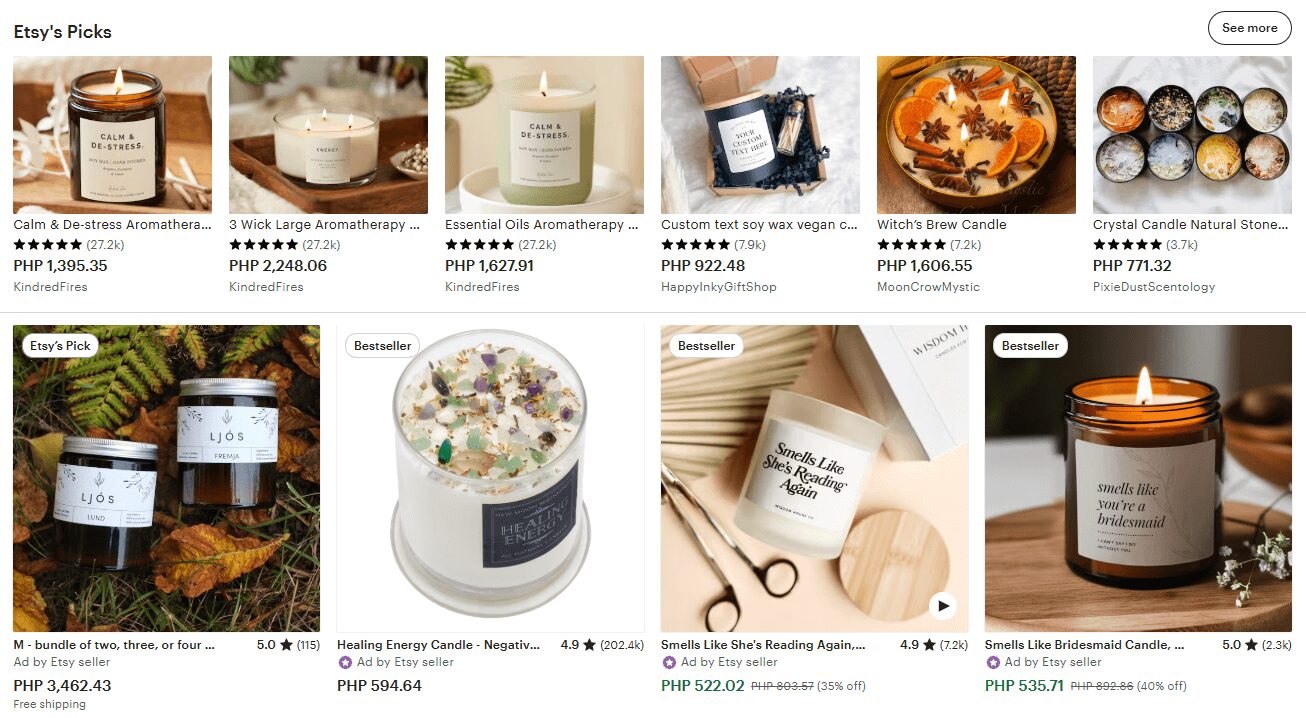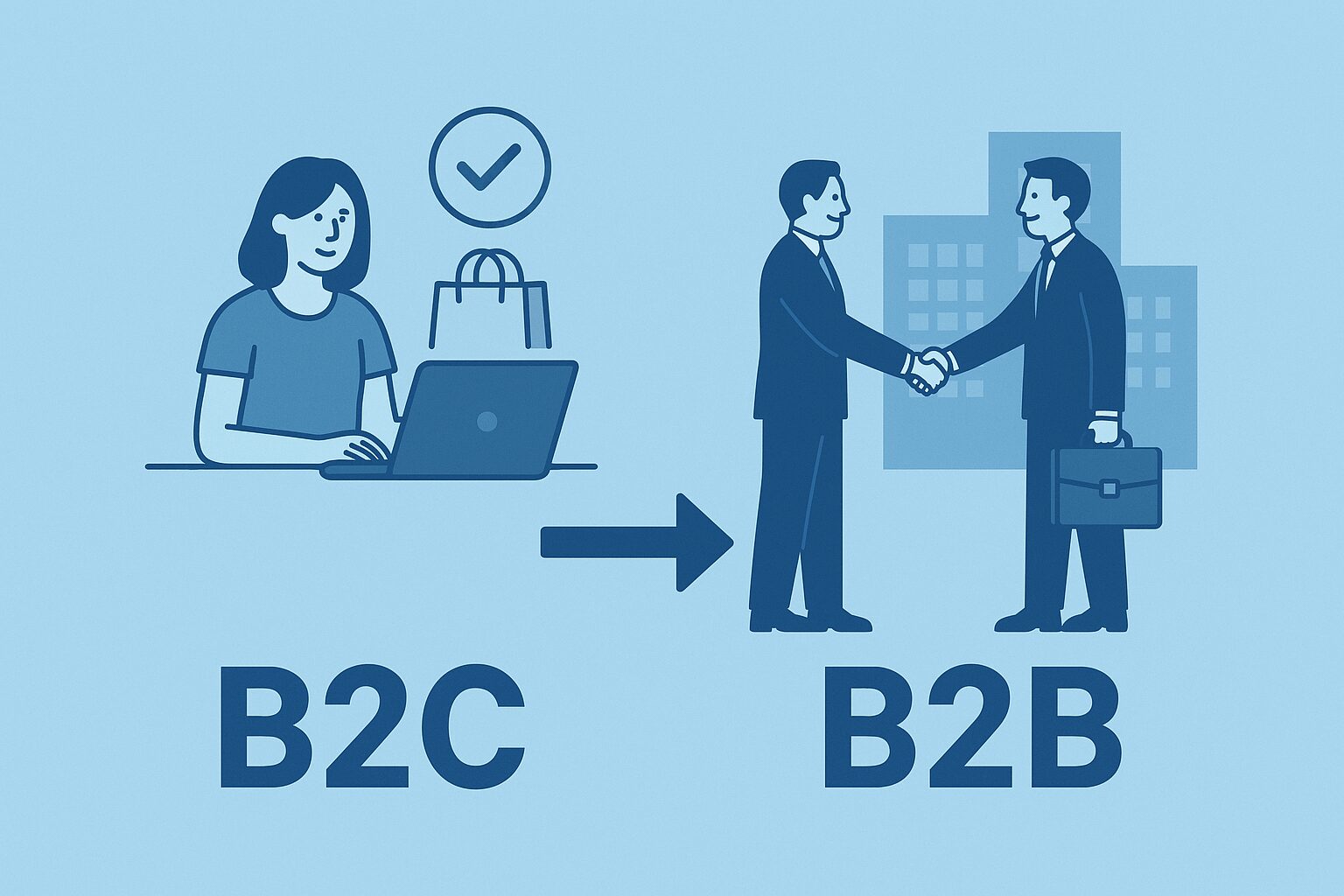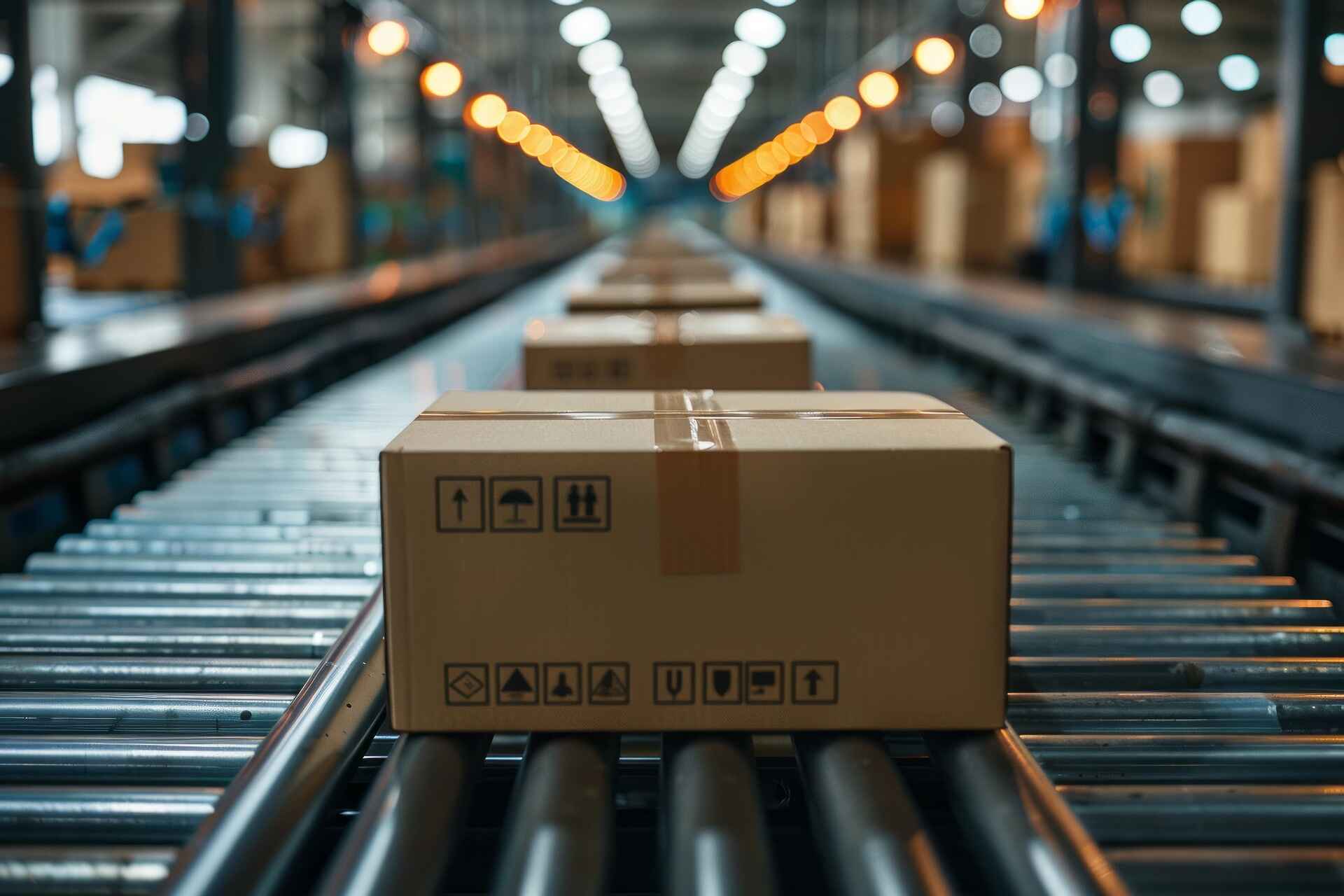Ever wondered why Amazon seems built for you, the everyday shopper, while sites like Alibaba cater to businesses buying in bulk? That’s the difference between B2B and B2C business models. And understanding how they work is crucial if you’re planning to start or grow a business.
Whether you want to sell handmade jewelry, offer cloud-based software, or run an online store, knowing the difference between these two models could mean the difference between success and frustration.
These models shape everything from how you price your products to how you market them, how long it takes to close a sale, and even how you handle customer service.
-
B2B and B2C business models define who you’re selling to—businesses or individual consumers—and influence how you market and sell.
-
B2B focuses on building long-term relationships with decision-makers, while B2C thrives on quick, emotional, and convenient buying experiences.
-
Choosing the right model depends on your product, audience, and whether you prefer high-touch sales or fast, scalable marketing.
-
Understanding the differences between B2B and B2C helps you avoid wasted budget, missed opportunities, and misaligned strategies.
-
You can start with one model and evolve into the other over time—what matters most is knowing your customer and starting with what fits best.
If you misidentify your audience or try to use a B2C strategy in a B2B setting (or vice versa), you could end up burning through your budget, missing key opportunities, or worse, building a business that doesn’t truly serve anyone well.
Knowing the difference helps you set realistic goals, reach the right customers, and build a brand that actually works in the market you’re targeting.
In this guide, I’ll explain what B2B and B2C actually mean, how they differ, and which one might be a better fit for your goals without overwhelming you with jargon.
What Is a Business Model, Anyway?
Think of a business model like the game plan for how your business makes money. It outlines who your customers are, what you’re selling, how you’ll reach them, and how you’ll earn revenue.
Just like restaurants operate differently from software companies, every business model has its own set of rules and expectations.
There are many types—subscription, freemium, direct-to-consumer—but two of the most foundational are Business-to-Business (B2B) and Business-to-Consumer (B2C). Understanding these helps you decide how to market, price, and deliver your product or service.
What Is Business-to-Business (B2B)?
A B2B business sells products or services directly to other businesses, not individual consumers. If you sell packaging materials to retailers or manage payroll software for corporations, your business falls under the B2B category.
These transactions are usually high-volume and high-value, which is why they often take longer to close. B2B is about building trust and long-term partnerships.
According to a 2023 report by Forrester, the global B2B ecommerce market is projected to hit $18.97 trillion by 2028, almost five times larger than B2C ecommerce. That’s a clear sign of how massive and profitable this space can be.
Take Salesforce, for example. It sells CRM software not to individuals, but to companies of all sizes. Their revenue in 2023 exceeded $31 billion, which is proof that B2B, though less visible to consumers, is incredibly lucrative.
Another example is Uline, a company that supplies packaging, shipping, and industrial products to businesses across North America. Their customer base isn’t your average online shopper. It’s warehouses, offices, and fulfillment centers.
Pro Tip: In B2B, trust is currency. Build authority through case studies, whitepapers, and thought leadership, because businesses don’t make impulse purchases. They make decisions based on value, ROI, and reliability.
What Is Business-to-Consumer (B2C)?
B2C businesses sell directly to individual consumers. Every time you order something from Amazon, stream a show on Netflix, or buy shoes from a Shopify store, you’re part of a B2C transaction.
B2C is about speed, emotion, and convenience. Unlike B2B, where deals can take weeks or months, B2C sales happen in minutes.
A 2021 study by Google and Deloitte found that 53% of mobile users will leave a website if it takes more than 3 seconds to load, and consumers are increasingly making purchase decisions in seconds based on how fast and seamless the mobile experience is.
That means your website, product page, and checkout flow have to be laser-focused.
Take Warby Parker, a company that disrupted the eyewear industry by selling stylish, affordable glasses directly to consumers online. Instead of relying on traditional retail stores, Warby Parker launched with a home try-on program and a sleek, user-friendly website.
Their approach removed the middleman, built customer trust through transparency and convenience, and made buying glasses as simple as ordering a book.
By focusing on a direct relationship with customers and investing in strong branding and digital experience, Warby Parker became a household name and was valued at about $6 billion when it went public in 2021.
Even small online sellers fall into this model. If you’re selling handmade candles on Etsy or running a Shopify store for pet accessories, you’re a B2C business.

Pro Tip: In B2C, storytelling sells. Use emotion, clean visuals, and easy navigation to guide buyers toward a decision. Don’t just focus on the product. Sell the lifestyle and experience behind it.
Main Differences Between B2B and B2C
To make things clearer, let’s look at how these models stack up in key areas:
Aspect Business-to-Business (B2B) Business-to-Consumer (B2C)
Audience Targets businesses and decision-makers (e.g., purchasing managers, CEOs, procurement departments). Targets individual consumers making personal purchasing decisions.
Sales Cycle Longer and more complex due to contract negotiations, budgeting, and approval processes. May take weeks or months. Short and fast, often driven by emotion, convenience, or trends. Purchases happen in minutes or days.
Marketing Approach Relies on logic, data, and relationship-building. Content includes whitepapers, webinars, and detailed case studies. Relies on emotion, brand storytelling, and visual appeal. Marketing often uses social media, videos, influencer campaigns, and email promotions.
Decision Drivers Value, ROI, long-term benefits, scalability, and efficiency. Decisions are rational and data-driven. Price, convenience, aesthetics, personal need, and impulse. Decisions are more emotional and immediate.
Order Size & Frequency High-volume orders placed on a recurring basis (monthly, quarterly, etc.). Often based on business needs and forecasts. Smaller order sizes, with irregular or seasonal frequency depending on consumer preferences or current trends.
Pricing Strategy Often uses custom quotes, volume-based discounts, or tiered pricing. Prices are rarely advertised publicly. Fixed pricing that is transparent and visible on websites or store shelves. Discounts and promotions are frequent.
Customer Relationship Long-term, account-based relationships with dedicated support and follow-ups. Trust and consistency matter greatly. Short-term interactions, but brands focus on repeat business through loyalty programs, fast delivery, and good customer experience.
Technology & Tools Uses CRMs, sales enablement platforms, and procurement software. Requires integration with ERP or supply chain systems. Uses eCommerce platforms, mobile apps, and user-friendly websites. Optimization for fast checkout and great UX is crucial.
Examples Salesforce (CRM software), Alibaba (bulk product sourcing), HubSpot (marketing tools), Uline (packaging supplies). Amazon (retail), Glossier (beauty products), Netflix (streaming), Nike (footwear and apparel).
Customer Expectations Expect personalized service, in-depth knowledge, and a reliable supply chain. Efficiency and accuracy are top priorities. Expect fast delivery, seamless shopping, easy ret
As marketing expert Neil Patel puts it, B2B marketing is about building relationships, while B2C is about creating desire.
Which Business Model Is Right for You?
Choosing between B2B and B2C is about finding the best fit for your product, your audience, and your strengths as a business owner. There’s no one-size-fits-all answer, but there is a smart way to decide.
Start by asking yourself these key questions:
- Who will benefit most from my product? Are you solving a problem for a business or for an individual?
- Do I want to build long-term contracts or serve a wide range of customers quickly? B2B thrives on deep relationships and repeat contracts. B2C leans on volume and fast turnaround.
- Am I more comfortable with high-touch sales or automated marketing? B2B often involves phone calls, demos, and meetings. B2C relies more on ads, influencers, and digital storytelling.
Let’s say you sell custom-printed T-shirts. If you’re supplying a local gym chain that needs bulk orders every season, you’re in the B2B game. If you’re selling one shirt at a time to college students on TikTok or Instagram, you’re clearly B2C.
Some companies even straddle both. Amazon is the most obvious example. Its Amazon Business arm caters to office supply buyers, while its main platform serves everyone from parents to pet owners.
Shopify sellers do this too—selling retail to the public while also offering bulk discounts or wholesale packages to smaller boutiques.
If you’re just starting, it helps to think practically:
- B2C is generally faster to test and launch. You can set up a store, run some ads, and get feedback in days. It’s ideal if you have limited funds or want to validate your idea before scaling.
- B2B often takes longer but can bring in bigger, more stable revenue once you gain trust. One solid contract could be worth dozens or even hundreds of individual B2C orders.
Also consider your personality and preferences. If you enjoy one-on-one relationships, negotiating deals, and building trust over time, B2B may suit you. If you love fast feedback, creative marketing, and riding viral trends, B2C might be your lane.
Pro Tip: B2C is easier to automate but harder to stand out in. B2B is harder to break into, but often less saturated and more loyal once you’re in. The better you understand your customer, the easier it will be to choose—and succeed.

And keep in mind that your first model doesn’t have to be your last. Many successful businesses evolve or expand into other models over time. The key is starting with the one you can execute best today.
Start with what fits your audience. There’s no “better” model—only the one that fits your vision, product, and audience best. B2B is about relationships, scale, and logic. B2C is about speed, emotion, and convenience. Know who you’re selling to, and let that guide your decisions.
As Peter Drucker once said, “The aim of marketing is to know and understand the customer so well the product or service fits him and sells itself.”
Start where you are. Learn as you go. You don’t have to have it all figured out. You just need to start.







